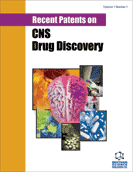Abstract
It remains a challenge to deliver effective concentrations of therapeutics into CNS pathologies, which is primarily due to the fact that current and investigational CNS therapeutics are suboptimally-sized to accumulate to effective concentrations in individual diseased CNS tissue cells. The blood-CNS barrier of blood capillary microvasculature within neuropathologic tissues is known to be permeable to lipid-insoluble macromolecules in a widespectrum of neuropathologies. In the case of CNS solid tumor tissue blood capillaries, the physiological upper limit of pore size to the transcapillary passage of spherical lipid-insoluble macromolecules is approximately 12 nanometers, and systemically administered imageable dendrimer nanoparticles within the 7 to 10 nanometer size range accumulate to therapeutic concentrations in solid tumors since this size range of particles maintain peak blood concentrations for several hours. In preliminary pre-clinical studies, it has recently been shown that one intravenous dose of small molecule chemotherapy-conjugated imageable dendrimer nanoparticles within the 7 to 10 nanometer size range, with doxorubicin bound to the particle exterior via acid-labile covalent linkages, is effective at regressing orthotopic rodent malignant gliomas. Although it is foreseeable that such drug-conjugated imageable nanoparticles within the 7 to 10 nanometer size range will be effective theranostic agents for the concurrent treatment (i.e. neutron capture therapy) and imaging (i.e. magnetic resonance) of solid tumor disease, the issue of maintaining a neutralized particle exterior following the attachment of cationic drugs will need to be addressed to eliminate cationic charge-mediated nanoparticle toxicity to blood capillary walls. In this review, the ultrastructural basis for blood capillary microvascular permeability to lipid-insoluble macromolecules is discussed, and the importance of delineating the precise physiologic upper limits of pore size in the blood capillary microvasculature of other CNS pathologies, including neurodegenerative, inflammatory and ischemic CNS diseases, is emphasized. The discussion herein will serve as guide for the future development of optimally-sized, non-toxic and non-immunogenic lipid-insoluble systemic therapies, which should be the focus of future patent applications and patents on CNS drug development.
Keywords: Blood-CNS barrier, blood-brain barrier, dendrimer nanoparticle, acid-labile covalent bond, theranostic agent, neutron capture therapy, endothelial glycocalyx layer, diaphragmed fenestrae, malignant glioma, solid cancer, physiologic upper limit of pore size.
 5
5





















